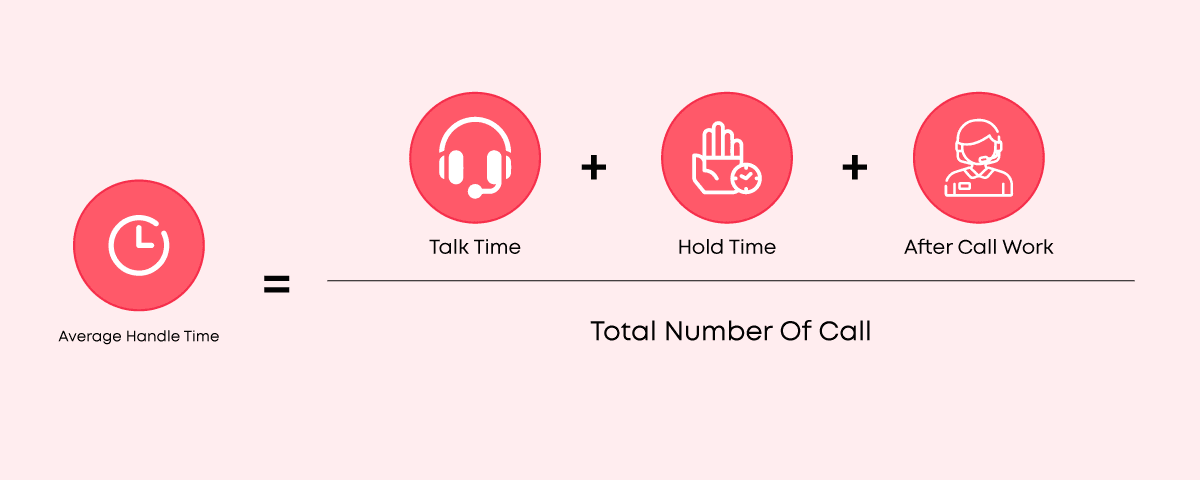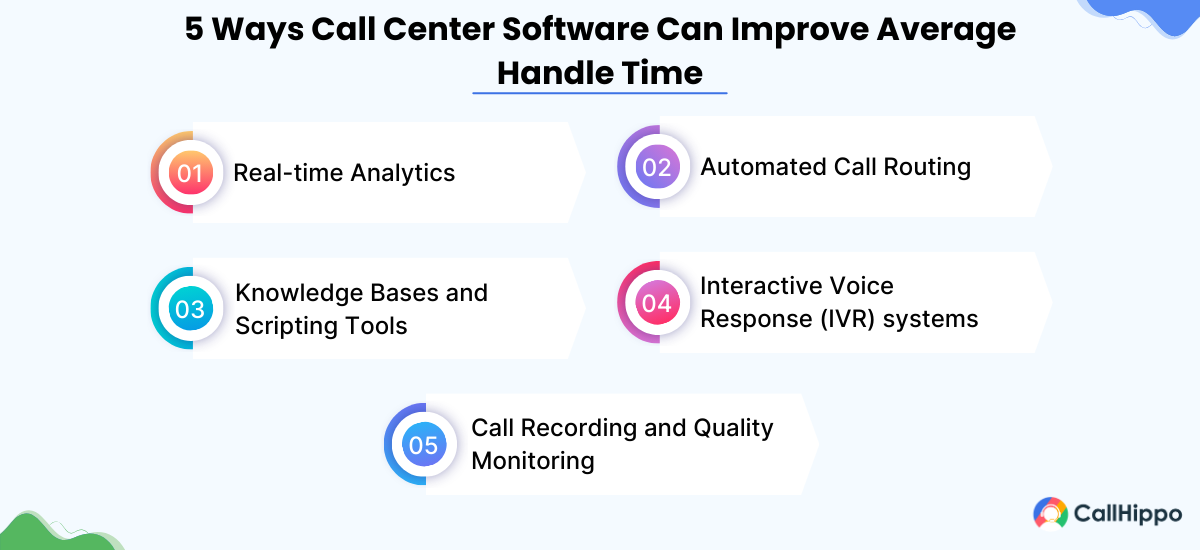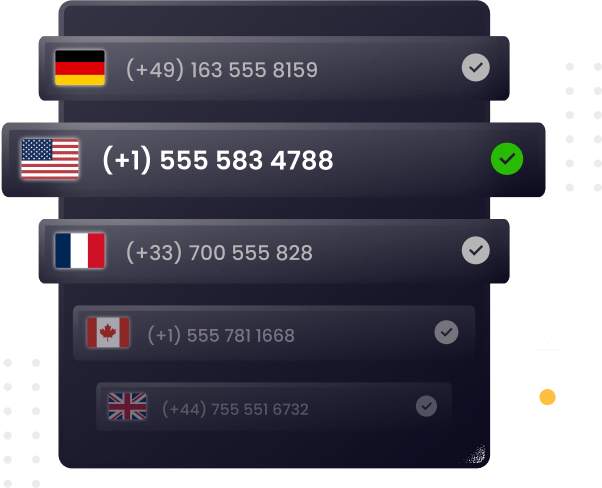Average Handling Time (AHT) is critical for call centers as it measures the efficiency of customer interactions. It measures the average call duration, including time spent talking, holding and after-call work. Call centers pay close attention to AHT because it impacts both operational costs and customer satisfaction.
A McKinsey study found that reducing AHT by 40% can boost conversion rates on service-to-sales calls by nearly 50%. But the question is, what is the meaning of AHT in a call center, and how do you measure it? And most importantly, how to improve AHT in a call center. Let’s understand.
Balance efficiency and quality with Average Handle Time, focusing on more than just call duration. Comprehensive training, AI-powered call center software, and regular data analysis are key to reducing AHT.
What Is an Average Handle Time?
A “good” Average Handle Time (AHT) is not a one-size-fits-all metric. It varies widely across industries and even among companies within the same sector. AHT is influenced by several factors, including a company’s customer experience goals, the complexity of its products or services, and its customer support structure.
In our research at CallHippo, we sought to determine benchmark AHTs across various industries and company sizes. Our study revealed interesting insights into how AHT varies across different sectors.
Here’s what we found:
Average Call Handle Time By Industry
| Sector | Average Handle Time (In Minutes) |
|---|---|
| BPO | 4.5 |
| Healthcare | 7.8 |
| Retail | 3.4 |
| Delivery & Shipping | 2.5 |
| Banking & Financial services | 6.2 |
| Telecommunication | 5.2 |
| Travel & Transportation | 7.8 |
| Consulting services | 7.2 |
| Real estate | 3.5 |
| Marketing | 2.8 |
Our findings illustrate the wide range of AHTs across different industries. For instance, we observed that the delivery business has an average handle time of 4.45 minutes, while the retail sector averages 6.25 minutes.
These results underscore an important point: there’s no universal standard for a “good” AHT. What’s considered optimal can differ greatly depending on the company’s size, customer base, and numerous other factors.
Meaning of AHT in Call Center
Average Handle Time measures the average call time of a specific conversation. It includes every activity that takes place from the time a call is received until it is finished, including talk time, hold time, conference time, wrap time, and transfer time.
A lower AHT indicates good call center performance and streamlined operations. In contrast, if the time customers spend on phone calls is high, it indicates that something is not right with the call handling process or the agent is not knowledgeable.
Also, low AHT in contact centers suggests that the agents are qualified and know their jobs well. On the other hand, high AHT indicates that the organization has an untrained workforce that cannot manage customer calls properly.
Meaning of AHT in BPO
BPO companies often handle customer service for multiple clients. They use AHT as a key performance metric as it directly impacts their profitability. Lower AHT means agents can handle more calls in a given time, potentially increasing revenue. However, BPOs must balance this with maintaining service quality for their clients’ customers.
AHT in BPO settings also reflects the complexity of tasks. Different clients or industries may have varying AHT benchmarks. For instance, technical support calls typically have longer AHTs compared to simple information requests.
It is worth noting that in the BPO context, AHT is frequently tied to service level agreements (SLAs) with clients. Meeting agreed-upon AHT targets is crucial for maintaining client relationships and securing contract renewals.
AHT Calculation in Call Center
You can calculate calculate average handle time in a contact center with this formula.
AHT = (Total Talk Time + Total Hold Time + Total After Call Work Time) / Total Number of Calls
This formula takes into account all aspects of handling a call, from the moment an agent picks up until they’re ready for the next call.
Example: Let’s say a call center handled 1000 calls in a day with the following totals:
- Total Talk Time: 50,000 minutes
- Total Hold Time: 5,000 minutes
- Total After-Call Work Time: 10,000 minutes
AHT = (50,000 + 5,000 + 10,000) / 1000 = 65 minutes
AHT Calculation in BPO
The AHT calculation in BPO environments is essentially the same as in call centers. However, BPOs often need to calculate AHT for different clients or projects separately.
The formula remains:

Example: A BPO handles calls for two different clients. For Client A, they handled 500 calls in a day:
- Total Talk Time: 20,000 minutes
- Total Hold Time: 2,000 minutes
- Total After-Call Work Time: 3,000 minutes
AHT for Client A = (20,000 + 2,000 + 3,000) / 500 = 50 minutes
For Client B, they handled 300 calls:
- Total Talk Time: 18,000 minutes
- Total Hold Time: 1,500 minutes
- Total After-Call Work Time: 4,500 minutes
AHT for Client B = (18,000 + 1,500 + 4,500) / 300 = 80 minutes
In this BPO scenario, client A’s calls have an AHT of 50 minutes, while client B’s calls have an AHT of 80 minutes. This difference might reflect varying complexities in the types of calls handled for each client.
How Does Call Center Software Improve Average Handle Time?
Call center software offers a range of features that significantly reduce Average Handle Time (AHT) while maintaining high-quality customer service. These tools provide real-time insights, automated call routing, knowledge bases, IVR systems, and quality monitoring tools. Let’s explore how each of these components contributes to improving AHT.

1. Real-time Analytics
Managers can monitor AHT trends as they occur. This immediate insight helps identify bottlenecks or issues that increase handle times. The software presents information in easy-to-understand dashboards. These visual tools transform complex data into actionable insights. Managers can then make rapid, data-driven decisions to optimize operations.
2. Automated Call Routing
Call center software routes call to the most appropriate agent based on skill set or availability. This reduces time spent on transfers or information searches. Intelligent routing systems consider factors like customer history and current call volume to reach the right agent on the first try and reduce the average talk time.
3. Knowledge Bases and Scripting Tools
Knowledge bases act as comprehensive, searchable libraries of up-to-date details about products, services, and common issues. Agents can quickly locate precise answers to customer queries without delay. Scripting tools complement this by offering guided workflows for complex processes. They ensure agents follow best practices while resolving customer issues.
4. Interactive Voice Response (IVR) systems
IVR can handle simple queries without agent intervention. This reduces overall AHT and frees agents for complex issues. Modern IVR systems understand natural language and offer personalized options to further reduce agent workload. The result is shorter average handle times across the company.
5. Call Recording and Quality Monitoring
Call recording allows managers to review calls and provide targeted coaching. They can spot areas where agents struggle or spend too much time. Some systems even use AI to analyze call recordings automatically. They flag calls for review based on keywords, emotions, or other criteria. The AI-powered analysis simplifies quality monitoring. It enables supervisors to identify key areas where agents can enhance their performance.
With CallHippo
- IVR
- Automatic Call Distribution
- CRM Integration

How To Improve AHT in a Call Center: 5 Proven Tips
Reducing Average Handle Time (AHT) in call centers requires a strategic approach. Here are five effective techniques to optimize AHT without compromising service quality:

1. Invest in Comprehensive Agent Training
Well-trained agents are crucial for maintaining low AHT. Create a comprehensive onboarding process for new employees. Offer ongoing learning opportunities to current team members to keep their skills sharp and up-to-date. Focus on product knowledge, efficient call handling techniques, and effective use of call center software. This ensures agents can resolve issues quickly and accurately.
2. Optimize Call Routing Strategies
Implement intelligent call routing to direct customers to the most suitable agent. This strategy reduces time spent on transfers and improves first-call resolution rates. Use historical data and real-time metrics to continuously refine routing rules. Efficient routing significantly cuts down overall handle time.
3. Leverage Analytics to Improve Processes
Utilize call center analytics to identify bottlenecks and inefficiencies in your processes. Review call recordings and performance metrics regularly. This data-driven approach helps pinpoint areas for improvement, such as common customer issues or ineffective procedures. Use these insights to streamline workflows and reduce unnecessary steps.
4. Implement Post-Call Work Automation
Reduce AHT by automating post-call tasks. Use software that can automatically categorize calls, update customer records, and generate necessary follow-up actions. This automation allows agents to focus on customer interactions rather than administrative tasks, leading to shorter overall handle times.
5. Encourage Peer-to-Peer Learning
Foster a culture of knowledge sharing among agents. Set up mentoring programs or regular team meetings where top-performing agents can share their strategies for efficient call handling. This peer-to-peer learning can lead to the spread of best practices across the team, ultimately improving AHT across the board.
Conclusion
Optimizing Average Handle Time is crucial for call center efficiency, but it shouldn’t come at the cost of customer service quality. Leverage call center software, implement targeted training, and foster a culture of continuous improvement to significantly reduce AHT while enhancing customer satisfaction. Remember, the ideal AHT varies across industries and organizations. Therefore, focus on finding the right balance for your specific needs while prioritizing the customer experience.
FAQs
1) How many calls can a call center handle per day?
A typical call center manages approximately 200 calls per day. However, this number can vary widely depending on factors such as the size of the center, the nature of the business, and the complexity of customer inquiries. Larger operations or those with efficient systems may handle significantly more calls.
2) What is the busiest day for call centers?
Monday is generally the busiest day for call centers. This is often due to issues accumulating over the weekend when many businesses are closed. Customers tend to contact support as soon as the work week begins, leading to higher call volumes. Large call centers typically staff more agents on Mondays to manage this increased demand.
3) What is call center KPIS?
Call center KPIs are crucial metrics that measure performance and efficiency. Key metrics include the time taken to resolve calls, the rate of issues solved in one contact, overall customer contentment, and the percentage of callers who hang up before speaking to an agent.

Subscribe to our newsletter & never miss our latest news and promotions.









